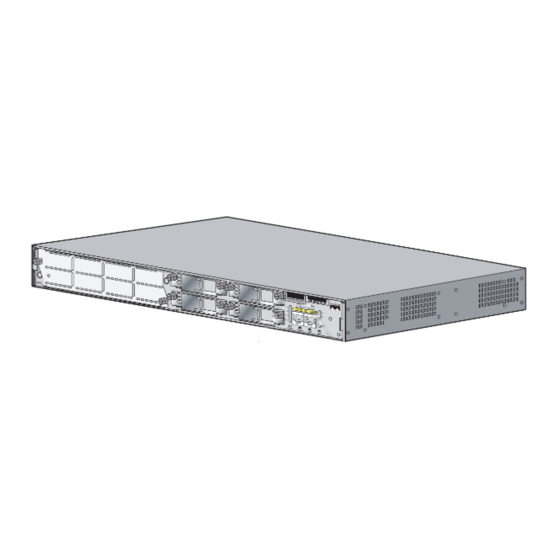Cisco 2821 Series Werkzaamheden - Pagina 13
Blader online of download pdf Werkzaamheden voor {categorie_naam} Cisco 2821 Series. Cisco 2821 Series 31 pagina's. 2800 series integrated services routers
Ook voor Cisco 2821 Series: Installatie en upgrades (21 pagina's), Gegevensblad (20 pagina's), Werkzaamheden (31 pagina's), Snelstarthandleiding (47 pagina's)

Configure the router
Define Rules and Filters Create packet Filters that are applied to User data streams on each
View Status Functions
Manage the router
Set Encryption/Bypass
Bypass Mode
The routers implement an alternating bypass capability, in which some connections may be
cryptographically authenticated and encrypted while others may not. Two independent internal
actions are required in order to transition into each bypass state: First, the bypass state must be
configured by the Crypto Officer using "match address <ACL-name>" sub-command under
crypto map which defines what traffic is encrypted. Second, the module must receive a packet
that is destined for an IP that is not configured to receive encrypted data. The configuration table
uses an error detection code to detect integrity failures, and if an integrity error is detected, the
module will enter an error state in which no packets are routed. Therefore, a single error in the
configuration table cannot cause plaintext to be transmitted to an IP address for which it should
be encrypted.
2.3.3 Unauthenticated Services
The services available to unauthenticated users are:
Viewing the status output from the module's LEDs
Powering the module on and off using the power switch
Sending packets in bypass
© Copyright 2007 Cisco Systems, Inc.
This document may be freely reproduced and distributed whole and intact including this Copyright Notice.
Define network interfaces and settings, create command aliases, set
the protocols the router will support, enable interfaces and network
services, set system date and time, and load authentication
information.
interface. Each Filter consists of a set of Rules, which define a set
of packets to permit or deny based on characteristics such as
protocol ID, addresses, ports, TCP connection establishment, or
packet direction.
View the router configuration, routing tables, active sessions, use
gets to view SNMP MIB statistics, health, temperature, memory
status, voltage, packet statistics, review accounting logs, and view
physical interface status.
Log off users, shutdown or reload the router, erase the flash
memory, manually back up router configurations, view complete
configurations, manager user rights, and restore router
configurations.
Set up the configuration tables for IP tunneling. Set preshared keys
and algorithms to be used for each IP range or allow plaintext
packets to be set from specified IP address.
13
